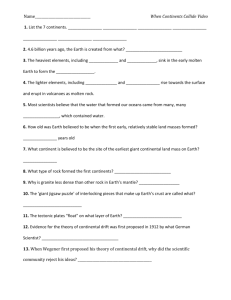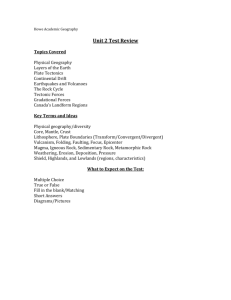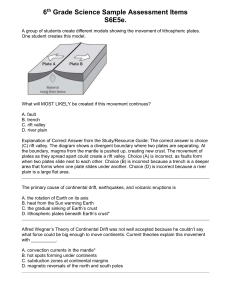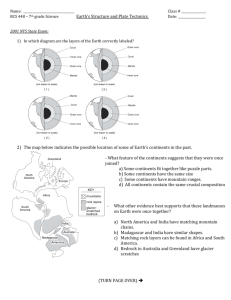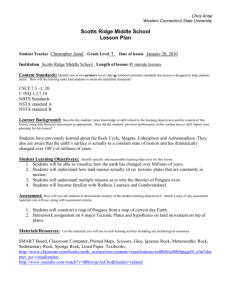Unit 7 Test Review
advertisement
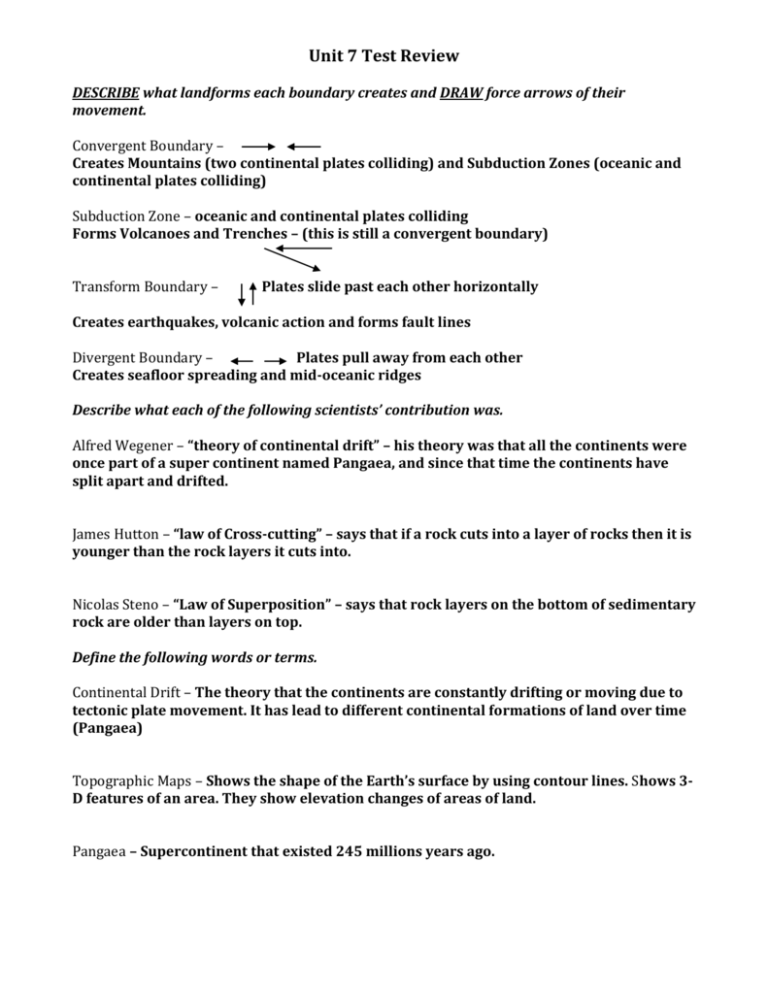
Unit 7 Test Review DESCRIBE what landforms each boundary creates and DRAW force arrows of their movement. Convergent Boundary – Creates Mountains (two continental plates colliding) and Subduction Zones (oceanic and continental plates colliding) Subduction Zone – oceanic and continental plates colliding Forms Volcanoes and Trenches – (this is still a convergent boundary) Transform Boundary – Plates slide past each other horizontally Creates earthquakes, volcanic action and forms fault lines Divergent Boundary – Plates pull away from each other Creates seafloor spreading and mid-oceanic ridges Describe what each of the following scientists’ contribution was. Alfred Wegener – “theory of continental drift” – his theory was that all the continents were once part of a super continent named Pangaea, and since that time the continents have split apart and drifted. James Hutton – “law of Cross-cutting” – says that if a rock cuts into a layer of rocks then it is younger than the rock layers it cuts into. Nicolas Steno – “Law of Superposition” – says that rock layers on the bottom of sedimentary rock are older than layers on top. Define the following words or terms. Continental Drift – The theory that the continents are constantly drifting or moving due to tectonic plate movement. It has lead to different continental formations of land over time (Pangaea) Topographic Maps – Shows the shape of the Earth’s surface by using contour lines. Shows 3D features of an area. They show elevation changes of areas of land. Pangaea – Supercontinent that existed 245 millions years ago. Describe what the “Ring of Fire” is and what type of plate boundary created it. Ring of Fire is an area in the Pacific Ocean where the majority of earthquakes and volcanoes that occur on Earth. The subduction zones in the Pacific Ocean from California to India make up the Ring of Fire. What layer of the Earth are the tectonic plates? (DO NOT use crust, mantle, or core) Lithosphere – entire crust and upper rocky part of the mantle – this is the tectonic plates. Asthenosphere – upper layer of the mantle – the layer the tectonic plates move on. What layer of the Earth is responsible for the movement of the tectonic plates? Asthenosphere In a subduction zone where would the newest or more recently formed crust be found? Towards the top. Name two pieces of evidence that Wegener used to prove his theory of continental drift. Fossils of the same species located on different continents The same glacier deposits in South America and Africa The continents fitting together like puzzle pieces Mountian Ranges matching on the continents of South America and Africa Which two continents did Wegener first notice that they appeared as if they were once joined together? South America and Africa Circle the correct word or term in bold. Rocks on the top or bottom are the oldest. Rocks on the top or bottom layer are the youngest. In a topographic map lines that are closer together or farther apart show the steepest terrain. In a topographic map the “arrows” shown point upstream or downstream. On a topographic map the contour lines show areas of equal or different elevation. Answer the following according to the topographic map above. Which side of the landform would be the steepest? Southeast or East side Which side of the landform contains a river? West side Where would a delta formation be found on this map? At the bottom of the landform on the west side. A delta is at the end or mouth of a river. Which point on this map, A B or C, would have the highest elevation? A Answer the following according to the rock layers above. Which layer above would contain the oldest rock? E Which layer above would contain the youngest rock? A Which law helps you determine what the age of certain layers of sedimentary rock? Law of superposition. MAKE SURE AND STUDY FOR YOUR TEST! LOOK OVER YOUR NOTES AND BELLWORK AS WELL AS THE REVIEW!


